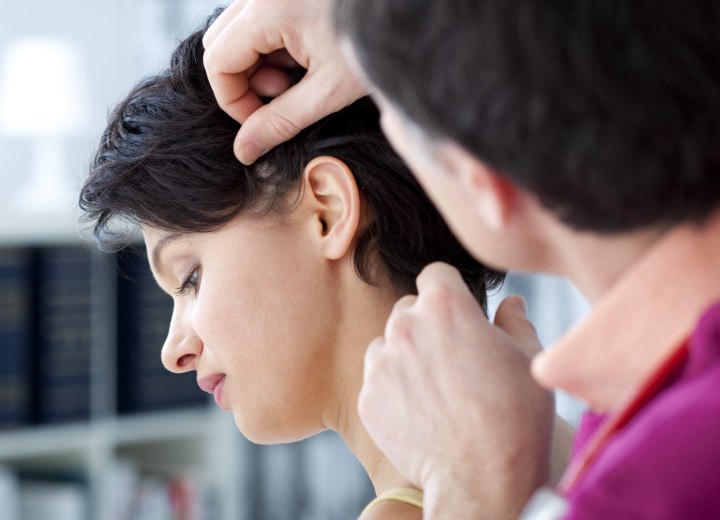Hair Diseases

Our hair, like our eyes and our smile, is one of the first features people notice about each other, which helps us to form those valuable first impressions about other people. Having hair that is full of life, vitality, and health is desired by most, and can be hindered by hair and scalp diseases that cause hair to become dry, brittle, and lack luster.
Hair diseases come in many different forms, all of which have different symptoms and varying degrees of severity. Below is an outline of the most common hair diseases and conditions.
Hair Shaft Abnormalities
With the elements the weather, lifestyle, and pollution have to offer, a certain number of breakages in our hair is expected and is completely normal. People experiencing excessively unusual amounts of hair breakage may have an abnormality within the hair shafts.
Exceptionally fragile hair and changes in density, color, and length are some of the first signs that a hair shaft abnormality may be manifesting. Without a microscopic examination or polar light microscopy of the actual hair shafts, along with a structured history and a physical examination of the patient, a diagnosis is rarely obtainable.

Trichorrhexis Nodosa
Trichorrhexis Nodosa is one of the most common hair diseases, as it is one of the most frequent causes of hair shaft abnormalities. Trichorrhexis Nodosa usually occurs after extensive and excessive trauma is placed on the hair, which causes node-like swellings to form on the shaft, which causes the hair to break easily.
While some experts assert that genetic factors may influence the onset of this hair condition, it is more commonly associated with environmental factors, such as excessive exposure to chemicals and aggressive brushing and blow-drying.
Less commonly, trichorrhexis nodosa can be caused by other underlying conditions such as hypothyroidism, Netherton's syndrome, and Menkes syndrome. Symptoms include patchy hair, discoloration at the tip, breakage close to the scalp, and an apparent lack of regrowth.
Like with many undesirable hair conditions, prevention is always better than cure, and trichorrhexis nodosa can be readily avoided by practicing "kinder" and more gentle routines to the hair. Similarly, while there is no actual "cure" for this hair disease, avoiding chemicals, harsh shampoos, and excessive styling and brushing over a prolonged period of time will improve the severity of the disease and the condition of the hair.

Loose Anagen Syndrome
Primarily, loose anagen syndrome affects children with fair hair. This hair disorder was first described in 1984 and is characterized by anagen hairs of abnormal morphology, which become loose and are easily dislodged from the scalp, causing the hair to become excessively thin and rarely grow beyond the nape of the neck.
Lose anagen syndrome typically affects white females who are aged 2 – 5 and have blonde hair, although a small number of cases have been reported of the disease affecting both boys and adults with darker hair. The condition is usually detected by parents who notice their child's hair is falling out painlessly, is dry, brittle, and unmanageable, and rarely needs cutting.
Unlike other hair diseases, with loose anagen syndrome the hair is not fragile or easily breakable, but rather just falls out in large clumps. A physical examination will reveal that there is no scarring or inflammation of the scalp present in patients suffering from loose anagen syndrome.
The causes of the disease are believed to be mostly hereditary, although the condition has also been associated with other diseases, including Noonan Syndrome, Acquired Immunodeficiency Syndrome, Woolly Hair Syndrome, and Nail-Patella Syndrome. Treatment of this hair disease usually consists of applying minoxidil lotion to the scalp.
Continue reading ...